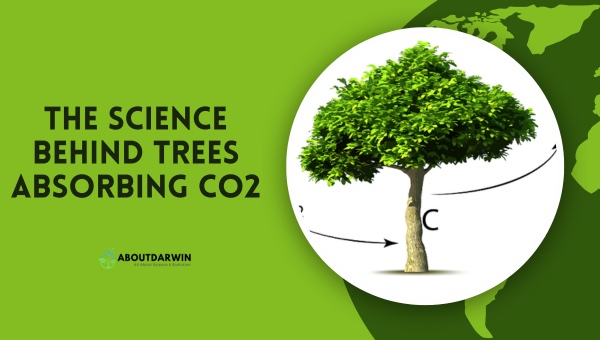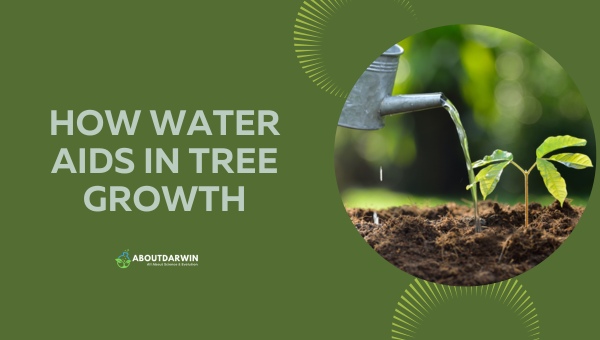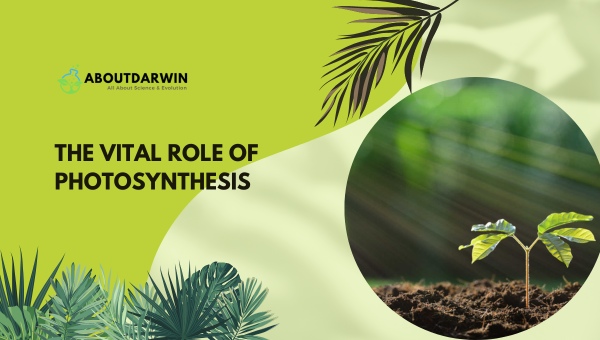Physical Address
304 North Cardinal St.
Dorchester Center, MA 02124
Trees are remarkable organisms that thrive through a fascinating process known as photosynthesis, where they convert carbon dioxide and water into energy.
This intricate mechanism not only sustains their growth but also plays a crucial role in maintaining the balance of our planet’s ecosystems. As they absorb sunlight, trees growth & transform these simple elements into vital resources, releasing oxygen that supports life.
The interplay of various factors, including species, climate, and nutrient availability, influences their growth rates and overall health, showcasing the complexity and beauty of nature’s design.

Contents
Trees are crucial in mitigating climate change by capturing and storing carbon dioxide (CO2) from the atmosphere. Understanding how they do this is essential to appreciate the significance of nurturing and protecting our forests.

Trees primarily absorb CO2 during a process called photosynthesis. This is how it works:
The chemical equation for photosynthesis is:6 CO2 + 6 H2O + light energy -> C6H12O6 + 6 O2
Through photosynthesis, a single tree can absorb an estimated 48 pounds of CO2 annually. As trees mature, their capacity to store carbon increases significantly. As a result, older, larger trees often hold more carbon than those younger in age.
The table below shows the typical amount of carbon stored in trees, depending on age and size:
| Tree Age (years) | Carbon Stored (pounds) |
|---|---|
| 1 – 10 | 1 – 20 |
| 10 – 20 | 20 – 100 |
| 20 – 50 | 100 – 1,000 |
| 50+ | 1,000 – 3,000 |
It’s important to note that tree species have varying capacities to absorb and store carbon. Here are some factors that influence a tree’s ability to store CO2:
Here are a few examples of tree species with varying capacities to store carbon:
In addition to photosynthesis, trees also release CO2 back into the atmosphere through respiration. Trees break down glucose during respiration to release energy, producing CO2 as a byproduct. This process is essential for their survival and normal functioning.
Despite this release of CO2, trees still act as net carbon sinks, absorbing more CO2 than they emit through the process of photosynthesis. This makes them vital partners in the battle against climate change.
Also Read: Discover 4 Steps of the Nitrogen Cycle: Importance, Impact
Water is an essential resource for tree growth, playing a crucial role in various physiological processes. Trees rely on water not only for their structural integrity but also for vital functions such as photosynthesis and nutrient transport.

Exploring how trees utilize water can help in effective management and conservation strategies, especially in the face of changing climate conditions and urban development.
Water Absorption and Transport
Trees absorb water primarily through their roots from the soil. This water is essential for transporting nutrients dissolved in it to different parts of the tree, including stems, branches, and leaves.
The movement of water within a tree occurs through a process called transpiration, where water evaporates from leaf surfaces, creating a negative pressure that pulls more water up from the roots.
This process is vital for maintaining turgor pressure, which keeps the tree rigid and healthy.
Photosynthesis
Water is a key component in photosynthesis, the process by which trees convert sunlight into energy.
During photosynthesis, trees take in carbon dioxide from the atmosphere and combine it with water to produce glucose and oxygen. Without sufficient water, photosynthesis is hindered, leading to reduced growth and vitality.
Soil Moisture and Tree Health
The availability of soil moisture significantly influences tree health. Trees can absorb between 10 to 150 gallons of water daily, depending on their size and species. However, less than 5% of this absorbed water is used for growth; most is lost through transpiration.
In periods of drought or insufficient rainfall, trees may exhibit stress symptoms such as wilting or early leaf drop. Maintaining adequate soil moisture is crucial for preventing these adverse effects.
Water Conservation
Trees also play a vital role in conserving water within their ecosystems. They reduce runoff by absorbing rainwater through their roots, which helps recharge groundwater supplies and prevent soil erosion.
Additionally, through transpiration, trees release moisture back into the atmosphere, contributing to local humidity levels and potentially influencing rainfall patterns.
Photosynthesis is crucial in how trees grow from carbon dioxide and water. It’s the process through which trees and other plants convert light energy, carbon dioxide (CO₂), and water (H₂O) into oxygen (O₂) and glucose (C₆H₁₂O₆), the energy source required for growth.
In this section, I’ll shed light on the fascinating world of photosynthesis and its significance in tree growth.

Sunlight is the primary energy source for photosynthesis. Trees capture this energy using chlorophyll, a green pigment found in their leaves.
The chlorophyll absorbs the sun’s light, which is then used to fuel a series of chemical reactions in tree cells. This is where carbon dioxide and water come into play.
With the energy provided by sunlight, trees use specialized cells called stomata to take in carbon dioxide from the atmosphere. Simultaneously, they absorb water from their roots.
These raw materials inside the tree’s cells are converted into glucose through complex chemical reactions. As a byproduct, oxygen is produced and released back into the environment.
The overall photosynthesis process can be summarized in the following simple equation:
6CO₂ + 6H₂O + Light Energy → C₆H₁₂O₆ + 6O₂
Glucose created through photosynthesis serves several essential purposes for trees:
The efficiency with which a tree can conduct photosynthesis depends on various factors, such as:
Photosynthesis is a critical process that allows trees to grow by converting carbon dioxide and water into glucose with the help of sunlight.
This essential life-sustaining process benefits not only the trees themselves but also the planet, as it helps reduce the amount of carbon dioxide in the atmosphere and provides oxygen for all living beings.
Growing trees from carbon dioxide and water is a miraculous process, but the speed at which this occurs varies, depending on several factors. In this section, I’ll discuss the main factors that influence the growth speed of trees.
1. Species of trees: Each tree species has its distinct growth rate; some grow rapidly, while others take centuries to reach maturity. For example, Populus, or poplar trees, are known for their rapid growth, while Sequoiadendron giganteum, the giant sequoia, grows more slowly.
2. Age of the tree: A tree’s age plays a significant role in its growth rate. Younger trees tend to grow more quickly than older ones, which face diminishing resources for growth as they get larger.
3. Soil conditions: Trees require well-drained, nutrient-rich soils to grow optimally. Specific soil characteristics, such as pH, texture, and fertility, can significantly impact tree growth.
Some key soil factors include:
4. Water and light availability: Trees need water and sunlight to thrive. Inadequate water or light can drastically slow down a tree’s growth speed. A proper balance of water and photosynthetically active radiation (light absorbed by the tree for photosynthesis) is crucial.
5. Temperature and climate: Environmental conditions, such as temperature and precipitation, can affect the growth speed of trees. Generally, trees require a certain temperature range to perform photosynthesis efficiently. Moreover, extreme weather events, such as droughts or extreme temperatures, may hinder growth.
6. Care and maintenance: Proper care and maintenance of trees can also influence their growth speed. Regular pruning, pest, and disease management, and fertilization contribute to the tree’s overall health, promoting faster growth.
Several factors determine the growth speed of trees, including their species, age, soil conditions, water and light availability, temperature and climate, and care and maintenance.
Also Read: Understanding Eutrophication: Causes, Stages, Preventive Measure
Let’s explore the integral roles climate and nutrients play in tree growth. Understanding these factors helps us appreciate how trees grow from carbon dioxide and water.
Firstly, climate significantly influences a tree’s growth and overall health. Trees can adapt to various climates, whether it’s arctic or tropical. Nevertheless, each tree species has a particular set of climatic requirements.
It’s crucial to note that temperature, precipitation, and sunlight are the most decisive climatic factors. Temperature affects a tree’s growth rate, while precipitation supplies much-needed water, and sunlight provides energy for photosynthesis.
Table of climatic factors and effects:
| Climatic Factor | Effect on Trees |
|---|---|
| Temperature | Influences growth rate |
| Precipitation | Supplies water |
| Sunlight | Provides energy for photosynthesis |
Trees can’t thrive without proper nutrients, unlike the good-to-grow conditions a suitable climate provides. To fulfill their growth needs, trees require several essential nutrients that they primarily absorb through their roots from the soil.
These nutrients can be classified into three categories:
Macronutrients include nitrogen, phosphorus, potassium, calcium, magnesium, and sulfur. Nitrogen is vital for tree growth as it promotes new cell and leaf development, while phosphorus encourages robust root systems.
Regarding micronutrients, trees require minerals such as iron, manganese, zinc, copper, boron, and molybdenum. These elements collectively enhance metabolic processes and contribute to overall tree health.
Conversely, the beneficial nutrients category includes sodium, silicon, and cobalt elements. Though not essential, these nutrients can positively impact tree growth and wellness.
Summary of nutrient types and their importance to trees:
To cultivate thriving trees, it’s crucial to have a keen understanding of the significance of climate and nutrients. By acknowledging these elements and their effects on tree growth, we can better manage our forests and gardens, ultimately contributing to a greener, healthier world.
Also Read: Sea Level Rise: Factors, Consequences & Mitigation
As I dive into the growth stages of trees, it’s crucial to understand the process of photosynthesis. Trees utilize carbon dioxide, water, and sunlight to convert these into glucose and oxygen.
Essentially, the energy from the sun is stored in the chemical bonds of glucose, which then powers the tree’s growth and development.
Tree growth can be divided into four primary stages:
The tree growth rate varies significantly depending on species, location, and environmental conditions. But, in general, tree growth can be grouped into three distinct patterns:
Here are some factors that influence tree growth:
Tree growth is a fascinating and complex process involving many variables. Recognizing the different growth stages and factors influencing them is essential to appreciate better and conserve our precious trees.
The intricate process of tree growth stages highlights the essential role trees play in our ecosystem. From the initial seedling phase to maturity, trees undergo significant transformations, relying on photosynthesis to convert carbon dioxide and water into vital energy sources.
This process not only facilitates their growth but also contributes to the atmosphere by producing oxygen.
These stages of tree growth is crucial for effective conservation efforts and sustainable forest management, ensuring that we continue to benefit from the environmental services trees provide while fostering a healthier planet.